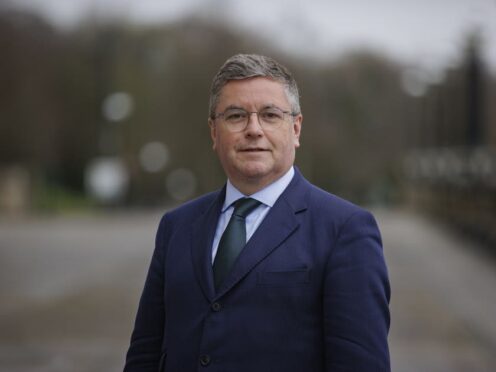
A new report into autism employment makes the “moral case” for helping neuro-divergent people into work, a Conservative former minister has said.
Sir Robert Buckland, who led the Buckland Review of Autism Employment, said employment can provide “fulfilment and happiness” for people on the autistic spectrum.
Sir Robert, whose daughter is autistic, said it was important for him “on many levels” that neuro-diverse people were involved in the report’s findings.
He told MPs: “This had to be a review that was led by autistic people about autistic people. In other words, nothing about us without us.”
The MP for South Swindon said there was a moral and a “hard-edge economic case” for supporting autistic people to work.
He said: “That will mean so much to the people who can do them, that will give their lives purpose, fulfilment and happiness and I think that concept of happiness is something that we must not lose in all of this.
“So there’s a moral case to be made for the recommendations that are set out in the review, but there’s also, and I make no apology for this, a hard-edged economic case as well. What’s good for autistic people will be good for the rest of our society.”
He added: “Only just under three in 10 autistic adults are in full-time or part-time work. It’s the lowest of all disability classes. That’s about 30% as opposed to 50% for disability generally.”
Sir Robert suggested a new approach that was “universal by design” and so would benefit autistic people who did not have a diagnosis or did not feel comfortable discussing a diagnosis with an employer.
He said: “A universal by design approach is going to make the most difference here and we’ve heard a lot over the years about autism friendly environments, and going out of our way to reach out and understand and allow people to explain, but that I think will only have a limited impact, or an impact upon those people who are comfortable and prepared to talk about autism.
“Surely it would be better to have a universal change to the way in which we recruit and retain employees.”
Recommendations in the report include initiatives to reduce stigma and capitalise on productivity, support programmes for autistic people to begin or return to work, and education for employers on working with neuro-diverse staff.
Chair of the Work and Pensions Committee, Labour MP Sir Stephen Timms, welcomed the report but described it as a “missed opportunity”.
He said: “As the review points out, the employment gap is much worse for autistic people than it is for disabled people more broadly.
“A disappointing feature of the report for me though, is the rather unambitious nature of the recommendations. They’re along the lines of ‘the Government ought to try a bit harder on this and do a bit more of that’ there aren’t any targets set out in the report, nothing to really help us to monitor progress.
“So I feel when the question is asked in two or five years time, have these recommendations been delivered? Then the answer is going to be a bit unclear.”
Work and pensions minister Mims Davies said: “I very firmly believe that autism should not be a barrier to starting, staying or succeeding in employment.
“This report is a big and extremely welcome step forward.
“It’s not only produced a plan to overcome barriers for autistic people but shows a path that can be followed for other groups facing barriers to employment.”

Enjoy the convenience of having The Sunday Post delivered as a digital ePaper straight to your smartphone, tablet or computer.
Subscribe for only £5.49 a month and enjoy all the benefits of the printed paper as a digital replica.
Subscribe